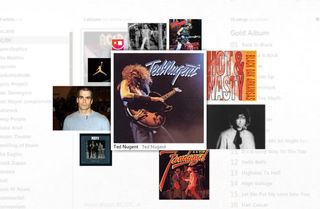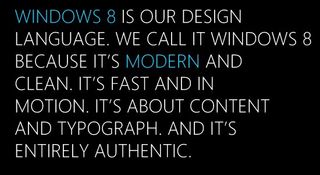Animations in Windows 10 breathe life into a cold, sterile experience — we need more, not less
Microsoft is adding some UI flair to Windows 10, but it still has work to do.

How much does adding somewhat frivolous animations to an OS matter? I'm not sure, but I do know that users of Windows will be very vocal as Microsoft experiments with adding them to Windows 10.
In Windows 10 Redstone 5 (due fall 2018) I expect Microsoft to continue to refine, improve, and make more consistent UI elements in Windows 10. That includes adding more animations to simple behaviors like the Action Center, but I can already see push back.
OS animations: Frivolous yet delightful

One of the fun aspects of my job is just covering technology in general. I go far out of my way to also not live in the Microsoft bubble where everything is perceived as being better by simply ignoring Apple's iOS or Google's Android.
As such, I recently began using iOS again – both on phone and an iPad 9.7-inch – to see where Apple is regarding its OS in 2018. Coming from using Android (OnePlus 5, Razer Phone) as my primary phone using the iPhone 8 irritated me to no end. The reason was everything is slower – whether it is the fingerprint reader, the back arrows still in the upper corner, and yes, those animations which are everywhere.
Animations are what makes an operating system delightful. Microsoft understood this at one time too as exemplified in Windows Phone 7's Metro UI, which was full of menus popping in, photos sliding in and out of Live Tiles, and just an "aliveness."

I think one of the reasons why Windows 10 Mobile felt so cold was this stark, non-animation OS that just lacked vibrancy. That situation seemed OK for the first year – giving some leniency to a brand-new OS being developed in front of our eyes – but by 2016 it was clear Windows 10 Mobile was never going to have that spirit of design like Windows Phone 7.
Windows 10 on PC is not much different, but there it seemed a tad more forgivable. Despite the name "personal computer" it is phones where being delightful tended to matter the most. Your desktop or laptop was more about getting work done.
Get the Windows Central Newsletter
All the latest news, reviews, and guides for Windows and Xbox diehards.
Of course, this distinction never bothered Apple who litters macOS with all sorts of goofy effects like swooping icons that expand into full apps. And people like it.
The good news – for some of us – is we see a bit of life come back to Windows 10. Take Redstone 5 Insider builds, which recently added a subtle fade to notifications populating in the Action Center. It was refined, but I noticed it right away. Microsoft's Jen Gentleman confirmed the change.
Since someone asked, here's the animation on builds 17618+ if there are notifications in the Action Center when you bring it up :) #WindowsInsiders pic.twitter.com/2jgUQF0tXtSince someone asked, here's the animation on builds 17618+ if there are notifications in the Action Center when you bring it up :) #WindowsInsiders pic.twitter.com/2jgUQF0tXt— Jen Gentleman 🌺 (@JenMsft) March 21, 2018March 21, 2018
But I foresaw a problem: Windows users. Nearly 700 million people are running Windows 10 and even more running older versions of Microsoft's OS.
I knew some would complain about the animations for the same reasons I criticized iOS – isn't everything now slower? Heck, even I commented that the animation seemed like a split second too long and others chimed in as well.
And yet, since then in using iOS more in my daily life (begrudgingly, I might add) I can't help but think this flair is exactly what Windows 10 needs more of to make it delightful. That's not to suggest there aren't other priorities in Windows 10, but I feel like there are multiple ways Microsoft could make this OS more alive that we're not quite seeing.
"As always, make it optional."
Conceptually there are problems with adding animations and flair to an OS too. Besides getting speed and timing correct the types and styles matter as well. In Windows Phone 7 the concept of motion was everywhere in that OS, which first started in Microsoft's Zune, music player. As fun as that UI was though some people hated it.
It may seem obvious, but designing an OS that everyone likes is very difficult especially when you're packing 20 years of legacy.

I suppose the only solution here – at least the one I would like to see – is Microsoft go all out with an animation spree akin to iOS and what Windows Phone 7 was…but as an option. That is, give users a simple OS-level toggle to enable and disable animations, and maybe even their level.
This"make it an option" is familiar territory to Microsoft as the company famously had its "Aero" system for Windows Vista that users could tweak slightly in the OS itself, or through third-party "tuner" apps.
Did you know?

The "Aero" name for the Windows Vista design language is actually an acronym: Authentic, Energetic, Reflective, and Open. Aero lasted through Windows 7, and was replaced by the complete design overhaul that was Metro Modern UI with Windows 8.
Even in the Microsoft Launcher for Android, there is a "performance mode" toggle that, you guessed it, disables animations. Going deeper in the OS Google lets those who enable "developer mode," which is trivial to enable, an option to disable or change the time duration of OS-level animations.
I abhor cluttering an OS with options for everything, but this is cross that Microsoft faces any time it tries to change a fundamental core of its OS. Heading to the /r/Windows10 subreddit and it is awash with people hating everything from the new UI, the Start menu, frequent updates – you name it.
Regardless, Microsoft is pushing towards a more polished version of Windows 10 with Redstone 4 and Redstone 5. I'd still like to see a grander vision of how Windows 10's UI will evolve presented at its Build developer conference in May.
While adding these bits of Fluent Design System and animations may seem trivial I'd argue they are key to making people love Windows – a core goal that Microsoft CEO Satya Nadella laid out in 2015. It's time to make that happen.

Daniel Rubino is the Editor-in-chief of Windows Central. He is also the head reviewer, podcast co-host, and analyst. He has been covering Microsoft since 2007, when this site was called WMExperts (and later Windows Phone Central). His interests include Windows, laptops, next-gen computing, and watches. He has been reviewing laptops since 2015 and is particularly fond of 2-in-1 convertibles, ARM processors, new form factors, and thin-and-light PCs. Before all this tech stuff, he worked on a Ph.D. in linguistics, watched people sleep (for medical purposes!), and ran the projectors at movie theaters because it was fun.
